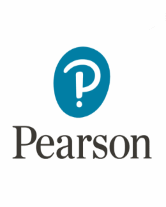Lesson Summary
This lesson is for students in a third-grade science class learning about the animal kingdom. Students should have already been introduced to the topic, and should be prepared to explore the phylum arthropoda (jointed-foot invertebrates).
Objective
The students will use a graphic organizer to prepare to gain information on a topic.
The students will read expository text, using a graphic organizer to guide their reading.
The students will reflect on what they learned and summarize.
Materials
- One copy of the book Bugs by Nancy Winslow Parker and Joan Richards Wright for each student
- KWL chart on an overhead transparency and marker
- Overhead projector
- One printed KWL chart for every two students
- Slips of paper, each labeled with the name of one of the various bugs listed in the book
Procedure
Demonstration
The teacher should begin the lesson by reviewing the scientific symbols located in the front of the book. Arrange the class into pairs and provide a copy of the book to each student. Place the KWL transparency on the overhead and write "horsefly" at the top. Elicit responses from the students to complete the "Know" section and the "Want to Know" sections of the chart. At this point the class's KWL Chart may look similar to this:
Horsefly
Know Want to Know Learned It flies.
It is not a horse.
It bites.
It is a bug.Why is it called a horsefly?
What does it eat?
Are they poisonous?
Is a horsefly more like a bee or a mosquito?
Does it have a cocoon like a moth?Read aloud the selection from the book about the horsefly. Allow the students to discuss the selection in pairs. As a class, complete the "Learned" section of the chart. Refer students to the text as they provide responses. Correct any misinformation that was given initially and create a plan to locate any information that was not gained by reading the text. At this point, the class's KWL Chart may look similar to this:
-
Guided Practice
Have students close the book and set it aside. Have each pair choose one slip of paper with the name of a bug on it. The following bugs each have a brief expository page and illustration in the book: cicada, ant, tick, flea, slug, spider, moth, mosquito, centipede, roach, cricket, termites, louse, firefly, and dragonfly. Distribute the KWL charts and have each pair complete the "Know" and "Want to Know" sections. Allow time for each pair to read the appropriate section concerning their bug, and allow time for them to discuss what they read as well as the illustration. Ask each pair to complete the "Learned" section of the KWL chart. When students are finished, have them discuss each bug in turn and share what they learned with the class. Based on what they learn in the class discussion, encourage students to make connections and draw comparisons between the bugs.
Independent Practice
For independent practice, have students select a new bug to read about and complete the same process individually. You may want to allow time for students to come together as a group to share what they learned about the bugs they researched.
Assessment
To demonstrate understanding, students should be able to complete the KWL chart appropriately and with minimal teacher direction. You might ask students to summarize their learning in a science journal entry. Another suggestion is to have students read about two kinds of bugs, complete a KWL chart for each, and then compare the bugs. Students can use a comparison chart or a Venn diagram to organize their thinking, and then write a paragraph comparing the two bugs.
Horsefly
| Know | Want to Know | Learned |
| It flies. It is not a horse. It bites. It is a bug. | Why is it called a horsefly? What does it eat? Are they poisonous? Is a horsefly more like a bee or a mosquito? Does it have a cocoon like a moth? | They live near swamps and in stagnant water. Bites from females last longer because their saliva has a chemical that prevents blood from clotting. The horsefly goes through three stages: egg, larva, and pupa to become an adult. |

This science lesson plan uses a KWL chart to investigate students' knowledge of bugs and to gain further information.



